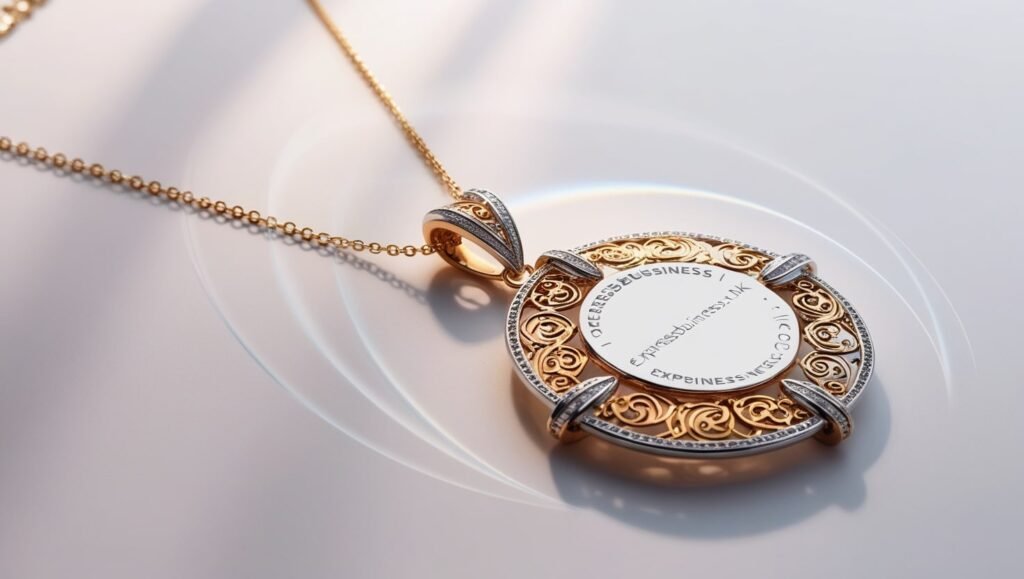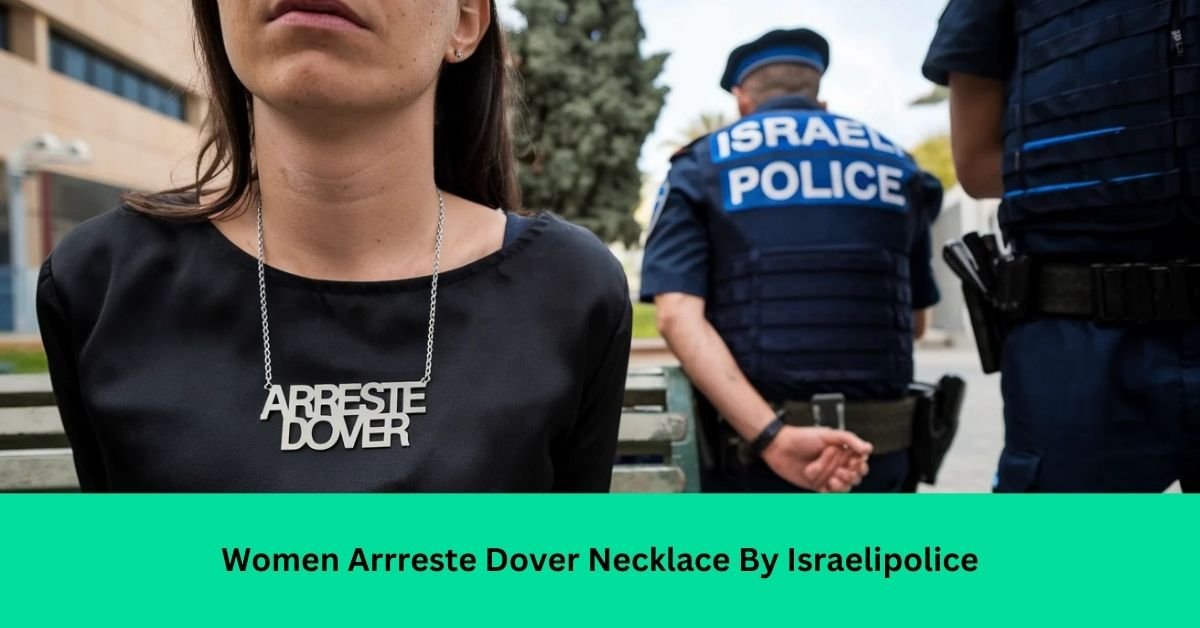Women Arrreste Dover Necklace By Israelipolice: In a surprising turn of events, Israeli police recently arrested several women related to the theft of the renowned Dover Necklace.
This incident has attracted significant media attention due to the necklace’s historical significance and the complexities surrounding its ownership.
This article will explore the rich history of the Dover Necklace, the details of the arrests, the legal ramifications, and the cultural implications of this intriguing case.
The Dover Necklace – A Storied Past!
The Dover Necklace is not just a piece of jewelry; it is a symbol of cultural heritage and historical significance.
Originally owned by a prominent family in Dover, this exquisite necklace was believed to have been lost during World War II.
Its unexpected reappearance in a private Israeli collection sparked intrigue and controversy regarding its origins and rightful ownership.

“The Dover Necklace has a rich provenance, having been passed down through generations of a prominent Dover family, including notable historical figures. Its journey through time reflects significant cultural and social changes in Europe, especially during tumultuous periods like World War II.”
The Arrests – Key Developments!
Following an extensive investigation, Israeli authorities executed a series of arrests targeting women suspected of being part of an organized network involved in the theft of the Dover Necklace.
Initial reports suggest these individuals may have had significant roles in trafficking stolen antiquities, revealing the complexities of art crime on a global scale.
Evidence Collected Surveillance footage, financial records, and witness testimonies.
Legal Challenges Ahead
The legal ramifications of this case are profound. Legal experts anticipate that the ongoing trial could set precedents in the prosecution of art theft and smuggling.
This highlights the necessity for stronger international cooperation to combat art crimes effectively.
“Legal experts suggest that the case will face significant challenges, particularly in establishing a clear chain of custody for the necklace. ‘Art theft cases often hinge on the nuances of provenance and ownership claims,’ noted art law specialist.”
| Legal Aspect | Details |
| Charges | Theft, conspiracy, possession of stolen property |
| Potential Outcomes | Establishing precedents in international art crime |
| International Cooperation | Required for successful prosecutions |
Public Reaction and Media Influence
Public interest in the Dover Necklace case has surged, fueled by extensive media coverage.
Various community leaders have called for greater transparency in the art market, emphasizing the importance of preserving cultural artifacts.
The case serves as a reminder of the fragile nature of cultural heritage and the ethical dilemmas surrounding ownership.
“The story has garnered over 200 news articles across major platforms, including BBC News, illustrating widespread public interest and concern over the implications of art theft in modern society.”
Cultural and Societal Implications
The theft and recovery of the Dover Necklace have ignited discussions about the preservation of cultural heritage within society.
There is a growing recognition of the need for more robust international laws to protect historical artifacts.
The incident underscores the critical importance of safeguarding such treasures for future generations.
“According to Dr. Rebecca Smith, Curator of the British Museum, ‘Provenance is not just about ownership; it’s about the story of the object and its journey through time, which adds immense value and significance to our cultural heritage.'”
Monetary Value of the Dover Necklace

Experts estimate the Dover Necklace to be worth millions, not only due to its material value but also its historical significance.
This necklace serves as a physical link to the past, making its recovery vital for its original owners and the broader cultural narrative it represents.
Connections to Larger Crime Syndicates
Speculation exists that the arrests related to the Dover Necklace theft may connect to broader smuggling operations.
Authorities believe that the criminal network involved could extend beyond this case, hinting at larger implications for international art crime.
Role of Jewelry in Organized Crime
Jewelry often serves a multifaceted role within criminal organizations. High-value items like the Dover Necklace can facilitate money laundering, enabling criminals to convert illicit funds into legitimate assets.
This case highlights how valuable artifacts can be manipulated within the underground economy.
Money Laundering Mechanisms
The use of jewelry in money laundering schemes is prevalent due to its portability and inherent value.
Criminals may use high-end pieces to obscure the origins of their illicit income, further complicating efforts to combat art crime.
Legal Guidance for Involvement in Art Theft
Individuals who find themselves involved in similar situations should prioritize cooperation with law enforcement.
It is crucial to seek legal counsel to navigate the complexities surrounding the ownership of potentially stolen artifacts.
International Implications of Art Theft
The ongoing investigation surrounding the Dover Necklace could reveal vital connections to larger criminal networks involved in art theft and smuggling.

If established, these links may prompt a broader examination of international cooperation in preserving cultural heritage.
Future of Art Theft Investigations
As this case unfolds, it has the potential to reshape how art theft investigations are conducted.
Increased scrutiny on art transactions and improved transparency in the market may emerge as key themes.
Potential Insights from the Dover Necklace
The investigation of the Dover Necklace may uncover valuable insights regarding organized crime operations.
Any hidden markings or documentation associated with the necklace could provide law enforcement with critical information.
The Value and Importance of the Dover Necklace
Beyond its financial worth, the Dover Necklace embodies cultural legacy and emotional significance.
Its recovery not only represents a triumph for law enforcement but also a win for cultural preservation.
Read: StreamEastio: Destination for Free Sports Streaming in 2024!
Conclusion:
The case surrounding the Dover Necklace is emblematic of the complexities involved in art theft and the preservation of cultural heritage.
As the investigation continues, it promises to set important precedents for international law enforcement and cultural property protection.
This incident serves as a reminder of the need for vigilance in safeguarding our historical artifacts.
FAQs:
What is the Dover Necklace, and why is it significant?
The Dover Necklace is a historically significant piece once owned by a prominent family, known for its exquisite craftsmanship and rich history.
Who was arrested in connection with the Dover Necklace theft?
Several women were arrested by Israeli police, suspected of involvement in a network related to the theft.
How did the necklace resurface after being lost during World War II?
The necklace reappeared in a private collection in Israel, but the circumstances of its recovery remain under investigation.
Why were Israeli police involved in this case?
Israeli police likely became involved due to the necklace’s presence in Israel and its potential links to organized crime.
What are the legal implications of the arrests?
The trial may set new precedents for prosecuting art theft and smuggling, emphasizing the need for international cooperation.
Is the necklace part of a larger crime syndicate’s operations?
Authorities suspect that the Dover Necklace may connect to broader criminal networks involved in art theft and trafficking.
How is jewelry used in money laundering schemes?
Jewelry’s high value and portability make it a popular choice for criminals looking to disguise the origins of illicit funds.
What role does jewelry play within criminal organizations?
Jewelry can symbolize status and authority, making it a significant asset within criminal groups.
What should someone do if they unknowingly possess a stolen item?
Cooperation with law enforcement and legal counsel is advisable to navigate the situation appropriately.
What impact could this case have on the future of art theft investigations?
The case may lead to stricter regulations and increased transparency in the art world, fostering stronger international efforts to recover stolen artifacts.
Read: Samocillin: A Comprehensive Guide to the Powerful Antibiotic





